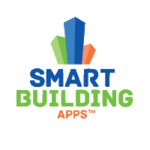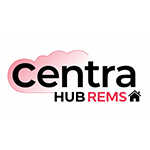Description

Smart Building Apps

HOA/POA Manager
Comprehensive Overview: Smart Building Apps vs HOA/POA Manager
Smart Building Apps, specifically those targeting HOA (Homeowners Association) and POA (Property Owners Association) management, are designed to optimize the administration and operation of residential communities. Here is a comprehensive overview of these applications:
a) Primary Functions and Target Markets
Primary Functions:
-
Community Management:
- Facilitate communication among homeowners, board members, and property managers.
- Manage community events, announcements, and meetings with ease.
-
Financial Management:
- Streamline dues collection, manage budgets, and automate accounting processes.
- Offer tools for financial reporting, expense tracking, and reserve fund management.
-
Document Management:
- Centralize storage of important documents such as bylaws, meeting minutes, and financial statements for easy access.
- Provide digital notice and approval processes for document updates.
-
Maintenance Management:
- Allow residents to submit maintenance requests and track their status.
- Schedule preventive maintenance tasks and manage vendor communications.
-
Amenities and Facility Booking:
- Enable residents to reserve communal spaces and amenities through an app.
- Ensure real-time availability status and easy payment processing for bookings.
-
Security and Compliance:
- Monitor compliance with community rules and regulations.
- Implement visitor management systems to enhance security.
Target Markets:
- Residential Communities: Both small and large-scale residential communities managed by HOAs/POAs.
- Property Management Firms: Companies that oversee multiple residential properties.
- Condominiums and Apartments: Shared living spaces that require streamlined management solutions.
- HOA/POA Boards: Board members who need tools to enhance community engagement and management efficiency.
b) Market Share and User Base
The market for HOA/POA management apps is fragmented with numerous players offering varying levels of service and feature sets. Key players include companies like AppFolio, Buildium, Condo Control, and Yardi Voyager.
- AppFolio: Known for its comprehensive property management suite, targeting medium to large-sized residential communities.
- Buildium: Offers robust functionality for HOA management and is popular among small to medium-sized communities.
- Condo Control: Focuses on communication and community management, widely used by condominium associations.
- Yardi Voyager: Targets larger property management companies with its incredibly detailed and scalable solutions.
In terms of overall market share, the penetration of these apps can vary significantly by region and community size. Larger HOAs/POAs might favor more sophisticated solutions like Yardi or AppFolio, while smaller associations might opt for cost-effective and user-friendly platforms like Condo Control or Buildium.
c) Key Differentiating Factors
-
Integration and Compatibility:
- Some apps offer superior integration with existing financial and accounting systems, while others focus more on community features and less on financial integrations.
-
User Experience and Accessibility:
- The ease of use often differentiates these apps; intuitive interfaces are essential, especially for board members and residents who may not be technically inclined.
-
Scalability and Customization:
- Larger communities require scalable solutions that can handle a greater volume of data and users. Customizable workflows are also crucial for communities with unique governance structures.
-
Customer Support and Training:
- The level of customer support and availability of training resources can be a significant factor, with some companies offering extensive onboarding processes and others offering more limited support.
-
Pricing Models:
- Differentiation is also found in pricing structures, whether flat-rate, per unit, or usage-based models, catering to different financial capacities of associations.
-
Feature Specialization:
- Some platforms specialize in specific features like document management, communication modules, or financial reporting tools, tailoring their offerings to specific needs within the market.
These smart building apps for HOA/POA management cater to varied needs, from streamlining operations to enhancing community engagement, making them essential tools for modern residential management. The choice of software often depends on the specific needs and scale of the community, its budget, and the desired features.
Contact Info

Year founded :
2008
Not Available
Not Available
Canada
Not Available

Year founded :
Not Available
Not Available
Not Available
Not Available
Not Available
Feature Similarity Breakdown: Smart Building Apps, HOA/POA Manager
When analyzing Smart Building Apps and HOA/POA Manager applications, it's essential to break down their functionalities and interfaces to understand their similarities and differences. Here's a comprehensive breakdown:
a) Core Features They Have in Common:
-
Property Management: Both types of apps provide tools for managing properties, such as listings, tenant or resident information, and lease or association rules management.
-
Communication Tools: They commonly include messaging systems to facilitate communication between property managers, tenants, residents, and other stakeholders. This includes announcements, updates, and the ability to send notifications.
-
Maintenance Requests: Users can submit and track maintenance requests. These apps often offer systems for receiving, processing, and scheduling service requests.
-
Payment Processing: Many of these apps handle financial transactions, such as rent collection for smart buildings and dues or fee collection for HOA/POA management.
-
Security Features: Both types often integrate smart access and monitoring systems, enabling features like digital locks, video surveillance integration, and visitor management.
-
Analytics and Reporting: Tools for generating reports on occupancy, income, expenses, and other key performance metrics are common, aiding both operational and strategic decision-making.
b) User Interface Comparison:
-
Design and Usability: Smart Building Apps typically focus on sleek, modern interfaces often compatible with various smart devices. HOA/POA apps may prioritize straightforward, easy-to-use designs suitable for a wider range of users, sometimes with less emphasis on high-end aesthetics.
-
Customization: Smart Building Apps might offer more customization concerning smart home integrations and device controls. In contrast, HOA/POA Manager apps may focus on customizing reporting and communication features to cater to specific community rules and regulations.
-
Mobile Access: Both often offer mobile apps; however, Smart Building Apps might feature more extensive mobile capabilities to control smart devices remotely.
-
Dashboard Complexity: Smart Building Apps could provide more complex dashboards with numerous live-feeds (e.g., energy usage, security systems), whereas HOA/POA interfaces may have simpler dashboards focused on community events, announcements, and financial summaries.
c) Unique Features:
-
Smart Building Apps:
- IoT Device Integration: Ability to connect and control a vast array of smart devices, including thermostats, lighting systems, and AI-driven environmental controls.
- Energy Management: Advanced features for monitoring and optimizing energy consumption in real-time.
- Real-time Data Visualization: Enhanced capabilities for visualizing data from multiple smart systems to monitor building efficiency and operations.
-
HOA/POA Manager:
- Covenant Enforcement Tools: Features specifically designed to help enforce community rules and regulations, including violation tracking and follow-up systems.
- Event Management: Tools for organizing community events, including scheduling, RSVPs, and resource allocation.
- Voting Mechanisms: Systems for facilitating community voting on issues or board member elections, often with secure, verifiable online voting capabilities.
In summary, while both Smart Building Apps and HOA/POA Manager applications share core functionalities around management and communication, they diverge based on specific user needs. Smart Building Apps cater more toward optimizing smart infrastructure and user experiences within buildings, whereas HOA/POA Managers prioritize community governance and resident engagement.
Features

Facility Management
Occupant Comfort
Energy Management
Security & Access Control

Community Management
Document Management
Financial Management
Governance and Compliance
Maintenance Management
Best Fit Use Cases: Smart Building Apps, HOA/POA Manager
Smart Building Apps and HOA/POA Manager cater to distinct needs within property management and real estate, yet share some overlapping aspects. Here’s a breakdown of their best fit use cases:
a) Smart Building Apps
Best Fit Use Cases:
-
Commercial Real Estate Management:
- Ideal for large office buildings, shopping centers, or mixed-use developments.
- Facilitates energy management, access control, and tenant communication.
-
Residential Complexes:
- High-rise apartments and luxury condominium buildings can use these apps for seamless resident interaction and utility management.
-
Co-Working Spaces:
- Offers a platform for tenant management, booking systems, and integration with smart devices for seamless operation.
-
Hospitality and Hotels:
- Useful for managing guest experiences, room bookings, and automation of hotel operations.
-
Educational Campuses:
- Universities and schools can leverage these apps for managing facilities, utilities, and occupancy.
b) HOA/POA Manager
Preferred Scenarios:
-
Homeowners Associations (HOAs):
- Perfect for residential neighborhoods, condominiums, or gated communities where management of shared resources and community engagement is critical.
-
Property Owners Associations (POAs):
- Useful for managing various types of residential subdivisions, focusing on policy enforcement, fee collections, and community announcements.
-
Mixed-Use Developments:
- Manages aspects related to both residential and commercial units, offering a balanced approach to community rules enforcement and facilities maintenance.
-
Neighborhood Associations:
- These managers help in organizing community events, managing infrastructure maintenance, and facilitating communication among residents.
c) Industry Verticals and Company Sizes
Smart Building Apps:
- Industry Verticals: Covers real estate, hospitality, corporate facilities, education, and retail.
- Company Sizes: Scalable for mid to large enterprises managing multiple properties.
HOA/POA Manager:
- Industry Verticals: Primarily focused on residential real estate, but can extend to mixed developments.
- Company Sizes: Suitable for small to mid-sized associations, though scalable for larger communities with complex needs.
Conclusion
- Smart Building Apps are most appropriate for environments requiring robust technological integration and are geared towards optimizing operational efficiencies within large, complex facilities.
- HOA/POA Managers excel in structured community environments where governance, member engagement, and oversight of shared resources or amenities are paramount.
Both products address different facets of property management, with Smart Building Apps offering more technological integration into building operations, while HOA/POA Managers focus on community management and coordination. Depending on the needs—whether they are more operational or community-oriented—stakeholders can choose the most appropriate solution.
Pricing

Pricing Not Available

Pricing Not Available
Metrics History
Metrics History
Comparing undefined across companies
Conclusion & Final Verdict: Smart Building Apps vs HOA/POA Manager
Conclusion and Final Verdict for Smart Building Apps vs HOA/POA Manager
a) Best Overall Value
Considering all factors including features, usability, cost, customer support, and adaptability to different community needs, HOA/POA Manager appears to offer the best overall value. It consistently provides an extensive range of features at a competitive price point, making it an attractive option for most community associations seeking comprehensive management software.
b) Pros and Cons of Each Product
Smart Building Apps
-
Pros:
- Advanced Technology Integration: Known for integrating with smart home devices, enabling seamless control and monitoring of building systems.
- Customizable: Highly flexible, allowing users to tailor the app’s functionalities according to specific community needs.
- User-Friendly Interface: Offers a sleek, intuitive interface that caters to both tech-savvy users and those less familiar with digital tools.
-
Cons:
- Higher Cost: Generally higher subscription fees make it less appealing for smaller associations or those with tighter budgets.
- Complex Setup: Initial setup can be complicated and may require professional assistance or training.
- Limited Industry Focus: Primarily designed for integrating smart technologies, potentially lack some specific HOA/POA management features.
HOA/POA Manager
-
Pros:
- Comprehensive Features: Includes a robust suite of HOA/POA-specific tools like accounting, communication tools, and compliance tracking.
- Cost-Effective: Offers competitive pricing structures suitable for various sizes of community associations.
- Support and Training: Provides excellent customer support and training resources to help users maximize the software’s capabilities.
-
Cons:
- Less Emphasis on Smart Tech: Lacks capabilities for directly interfacing with smart building technologies, which might be a downside for tech-forward communities.
- Basic Interface: The user interface might seem dated or simplistic compared to more modern applications.
- Customization Limitations: While it is feature-rich, it may not allow for as much customization or third-party integration as Smart Building Apps.
c) Specific Recommendations for Users
-
Assess Your Community's Needs: Users should evaluate their specific community requirements. If smart technology integration and customization are priorities, Smart Building Apps may be the better choice despite its higher cost. Conversely, if you need a service-focused on efficiently managing HOA/POA responsibilities with budget-friendly options, then HOA/POA Manager is ideal.
-
Consider Budget and Resources: Organizations with limited budgets or those not needing advanced features should lean towards HOA/POA Manager. If the budget allows, and you wish to leverage IoT devices, investing in Smart Building Apps could offer long-term benefits.
-
Trial and Feedback: If possible, take advantage of any free trials or demonstrations offered by either software to better understand their interface and functionality. Gather feedback from potential users within the community to ensure alignment with their expectations and comfort levels.
In conclusion, both Smart Building Apps and HOA/POA Manager offer distinct advantages depending on the specific needs and objectives of your organization. By carefully evaluating the unique features and focus of each, users can make a well-informed decision that best meets the demands of their communities.
Add to compare
Add similar companies



